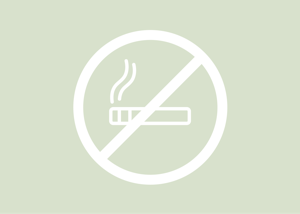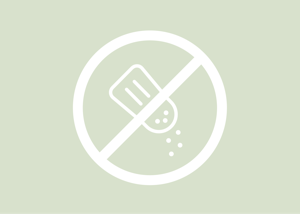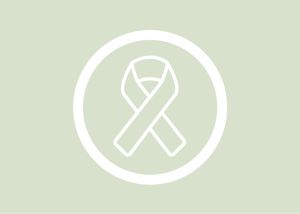Building Synergies
Building synergies between diseases as well as health systems improves cancer prevention and treatment.
In 2011, the global community adopted the Global Action Plan (GAP) for the prevention and Control of Non-communicable Diseases (NCDs). The GAP urged countries to set national targets to address premature death from four major NCDs (cancer, cardiovascular disease, diabetes, and respiratory disease). Built into the GAP is the opportunity to address various risk factors across NCDs that contribute to premature mortality, known as “best buys”. (Figure 1)

REDUCE TOBACCO USE
- Tax increases
- Smoke-free indoor workplaces and public places
- Health information and warnings
- Bans on tobacco advertising, promotion and sponsorship

REDUCE HARMFUL USE OF ALCOHOL
- Tax increases
- Restricted access to retailed alcohol
- Bans on alcohol advertising

REDUCE UNHEALTHY DIET
- Reduced salt intake in food
- Replacement of trans fat with polyunsaturated fat
- Public awareness through mass media on diet

REDUCE PHYSICAL INACTIVITY
- Public awareness through mass media on physical activity

MANAGE CARDIOVASCULAR DISEASE (CVD) AND DIABETES
- Counseling and multi-drug therapy for people with a high risk of developing heart attacks and strokes (including those with established CVD)
- Treatment of heart attacks with aspirin

PREVENT AND MANAGE CANCER
- Hepatitis B immunization to prevent liver cancer
- Screening and treatment of pre-cancerous lesions to prevent cervical cancer
In addition to focusing on these proven strategies, countries can turn to successful programs in maternal and child health and HIV prevention and control, among others, to reach the target population to promote cancer prevention and control. Adequately funded and staffed National Cancer Control Plans are the best approach to address the cancer burden in the existing health context. (Figure 2)
The growing cancer burden in low- and middle-income countries necessitates building on existing infrastructure. (Map 1 & 2) In Rwanda, cervical cancer control has been successfully integrated into women’s health services. In Kenya, leaders built on the existing HIV-treatment infrastructure to screen and treat women for cervical cancer.
Figure 2. Countries with national cancer control and noncommunicable disease (NCD) plans (%), 2015.
41% of countries have a national cancer control plan and a non-communicable disease plan.
41% of countries have only a non-communicable disease plan.
17% of countries have only a national cancer control plan.
1% of countries have neither a national cancer control plan nor a non-communicable disease plan.
The transformed health systems established through investment in HIV programming in sub-Saharan Africa present a unique opportunity for countries to tackle the rapidly rising burden of NCDs.
The American Society for Clinical Oncology trains primary care physicians in countries with limited oncology infrastructure to recognize the signs and symptoms of cancer, and to better integrate cancer services into existing resources. Partners who can help country planners see the whole health landscape, including cancer, are critical in supporting this integration at the country level. For example, the International Cancer Control Partnership was formed by the US National Cancer Institute and the Union for International Cancer Control to support country development of national cancer plans or to encourage countries to include cancer control activities within their NCD plan. The International Cancer Control Partnership portal contains resources for plan development, including examples of plans that integrate across the health system.
Essentially, cancer cannot be addressed alone. It shares many common risk factors with other NCDs, and the health systems that work to prevent and treat NCDs as well as infectious diseases can be leveraged to effectively incorporate cancer control.
Quote:
El-Sadr WM, Goosby E. Building on the HIV platform: tackling the challenge of noncommunicable diseases among persons living with HIV. AIDS. 2018;32 Suppl 1:S1-S3.
Cervical cancer in women with HIV:
Patel P, Rose CE, Collins PY, et al. Noncommunicable diseases among HIV-infected persons in low-income and middle-income countries: a systematic review and meta-analysis. AIDS. 2018;32 Suppl 1:S5-S20.
Text:
Tangcharoensathien V, Chandrasiri O, Waleewonga O, Rajatanavin N. Overcoming internal challenges and external threats to noncommunicable disease control. Bull World Health Organ. 2019;97:74–74A. Available at: https://www.who.int/bulletin/volumes/97/2/18–228809.pdf.
Binagwaho A, Ngabo F, Wagner CM, et al.. Integration of comprehensive women’s health programmes into health systems: cervical cancer prevention, care and control in Rwanda. Bull World Health Organ. 2013;91:697–703. Available at: https://www.ncbi.nlm.nih.gov/pmc/articles/PMC3790215/pdf/BLT.12.116087.pdf.
Menon S, Rossi R, Harmon SG, Mabey H, Callens S. Public health approach to prevent cervical cancer in HIV-infected women in Kenya: Issues to consider in the design of prevention programs. Gynecol Oncol Rep. 2017;22:82–88. Available at: https://www.ncbi.nlm.nih.gov/pmc/articles/PMC5678735/.
Map:
Ferlay J, Ervik M, Lam F, et al. Global Cancer Observatory: Cancer Today. Lyon, France: IARC. Available from: https://gco.iarc.fr/today.
World Health Organization Global Health Observatory Data Repository, https://www.who.int/gho/en/.
Figure 1:
Saving lives, spending less: a strategic response to noncommunicable diseases. Geneva, Switzerland. World Health Organization; 2018 (WHO/NMH/NVI/18.8). Licence: CC BY-NC-SA 3.0 IGO.
World Health Organization and World Economic Forum. From Burden to “Best Buys”: Reducing the Economic Impact of Non-Communicable Diseases in Low- and Middle-Income Countries. https://www.who.int/nmh/publications/best_buys_summary.pdf
Figure 2:
Romero Y, Trapani D, Johnson S, et al. Global Analysis of National Cancer Control Plans. Lancet Oncol. 2018;19(10):e546-e555.